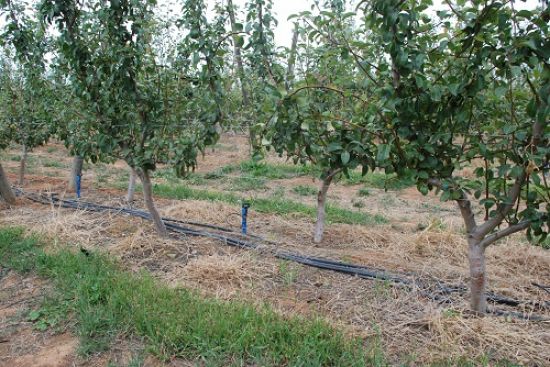Drip irrigation was able to meet pear crop water requirement and provide substantial improvement in water use efficiency in young trees. Water savings of approximately 35 % over the first four years after planting were achieved by using drip irrigation compared with microjet irrigation. Drip irrigation did not result in delayed establishment of young pear trees. In fact, drip irrigation increased early yields by 167 %. Pulse irrigation with microjets is not advised for pear trees in their first-leaf because of increased water losses via evapotranspiration, which decreases soil water availability and increases the risk of water stress. Once trees cropped, pulse irrigation improved fruit size. Combined with a trend for increased fruit number (not statistically significant), the increased fruit size contributed to 23 % greater yield in Pulse than Standard irrigation treatments in the sixth-leaf. Root pruning of young pear trees did not affect tree vigour or increase precocity.
Summary of the effects of drip irrigation and irrigation interval in newly planted pear orchards on irrigation requirement, water status, growth and yield.
Key messages:
- 35% less irrigation was applied in the drip treatments
- Drip irrigated trees in Year 1 were less stressed
- Frequently irrigated trees in Years 3 and 4 were less stressed
- There was no effect of drip irrigation or irrigation interval on young tree growth
- Yield increased by 167% under drip irrigation attributed to fruit number
- Spur flower cluster number was higher under drip irrigation
- Fruit size was greater under frequent irrigation
Summary results - Irrigation for young pears. Download PDF in new window (Note: this document does not meet WCAG 2.0 accessibility guidelines)
This project, AP12002 Profitable Pears: Maximising productivity and quality of new pear varieties, is funded by Agriculture Victoria with co-investment from Horticulture Innovation Australia Limited using the apple and pear levy and funds from the Australian Government
 Microjet Irrigation
Microjet Irrigation
